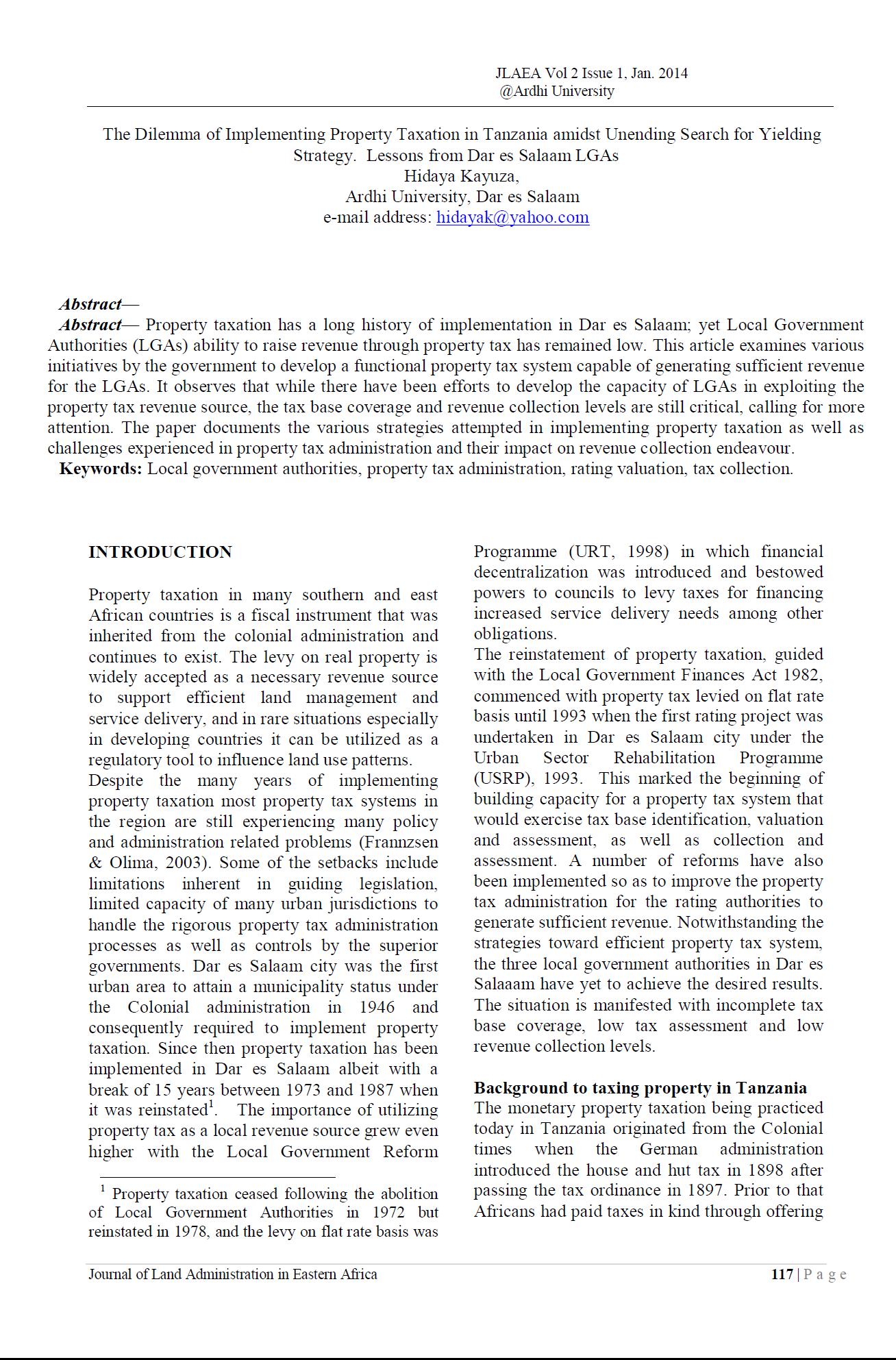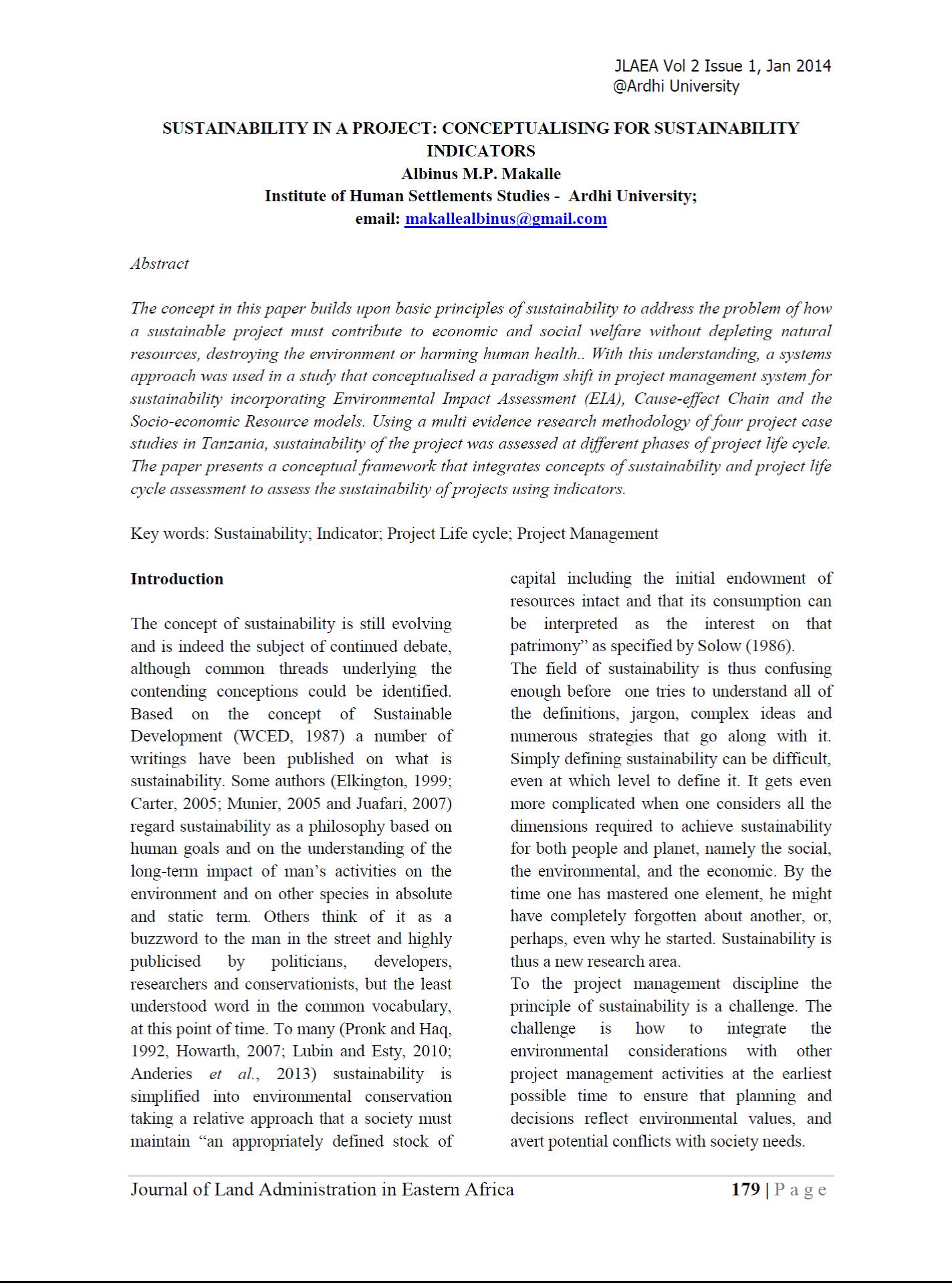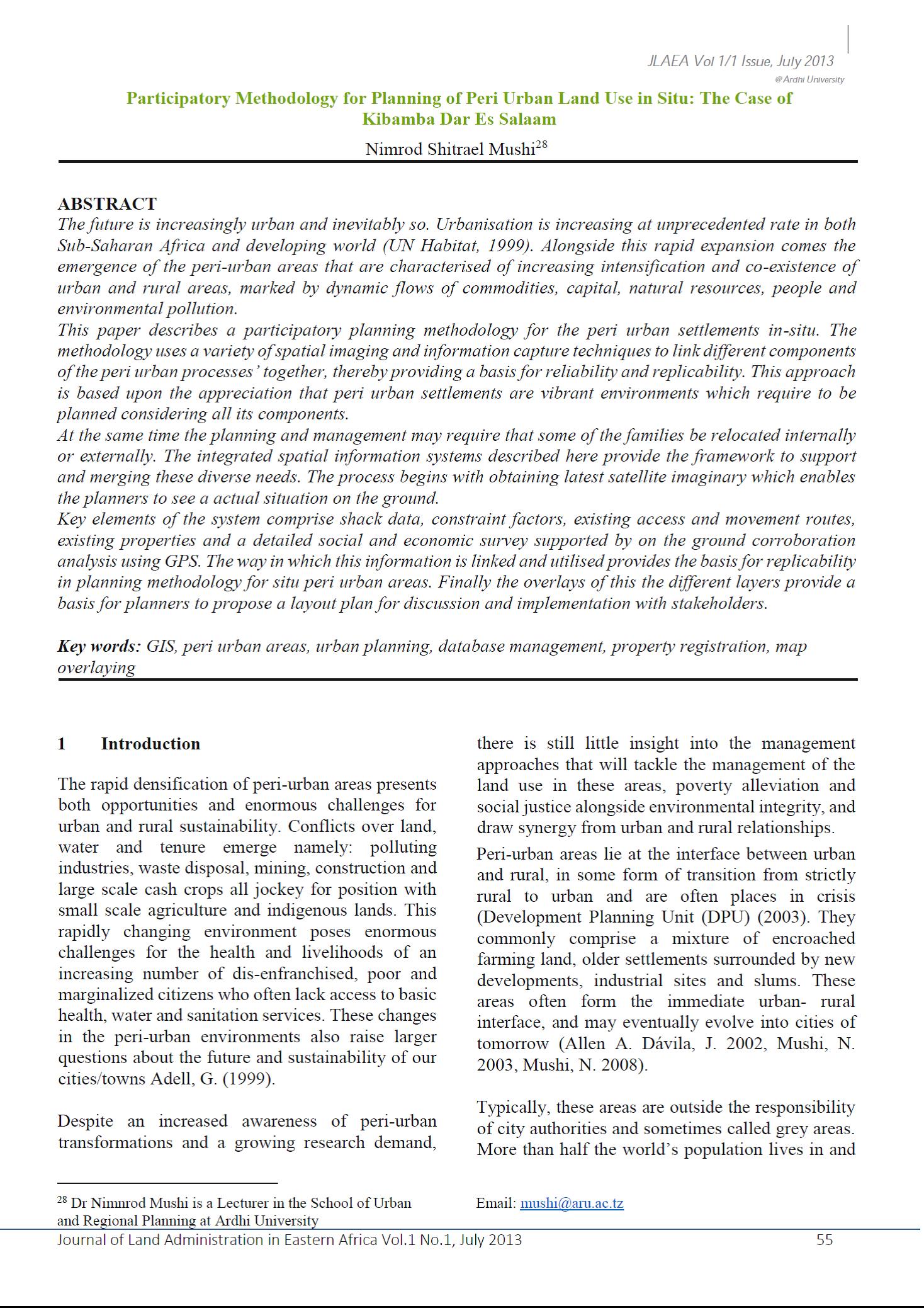Godfrey Eliseus Massay is a lawyer and land tenure specialist.He has eight years of experience working on land rights and in the natural resource sector in Tanzania, and has written and published numerous articles on land rights in both national and international academic journals.
Details
Location
Contributions
Displaying 101 - 110 of 218AN EVALUATION OF THE APPLICATION OF COMPUTER ASSISTED MASS APPRAISAL IN TANZANIA
Property tax is an invaluable source of revenue that is harnessed to finance municipal services in many urban areas all over the world. In most tax jurisdictions, property tax is a levy that is based on the market value of the property, hence often there is a need to carry out regular property valuations with a view to updating the tax base of a rateable area. In Tanzania, rating valuation has traditionally been carried out using the single parcel valuation approach.
Conceptualizing Fair, Full and Prompt Compensation – the Tanzanian Context of Sustaining Livelihood in Expropriation Projects
Objections to assessed compensation for expropriated land in Tanzania have been on increase irrespective of the changed ideologies of the country. The basis of valuation assessment as provided in the laws governing land acquisition is ‘market value’ while the local valuation practice has had limited use of the basis in compensation and resettlement assignments.
The Dilemma of Implementing Property Taxation in Tanzania amidst Unending Search for Yielding Strategy.
Property taxation has a long history of implementation in Dar es Salaam; yet Local Government Authorities (LGAs) ability to raise revenue through property tax has remained low. This article examines various initiatives by the government to develop a functional property tax system capable of generating sufficient revenue for the LGAs. It observes that while there have been efforts to develop the capacity of LGAs in exploiting the property tax revenue source, the tax base coverage and revenue collection levels are still critical, calling for more attention.
Development of Road Selection Model for Transportation Improvement with Minimum Compensation Costs in Upgrading Informal Settlements
Selection of roads for improvement of transport network with minimum demolition of houses required in roads widening has been a challenge for many years in upgrading informal settlements. The problem is compounded by lack of a methodological tool required to assist decision makers on selecting roads that can be widened and improved for improvement of transport network with minimum demolition of houses and compensation costs.
SUSTAINABILITY IN A PROJECT: CONCEPTUALISING FOR SUSTAINABILITY INDICATORS
The concept in this paper builds upon basic principles of sustainability to address the problem of how a sustainable project must contribute to economic and social welfare without depleting natural resources, destroying the environment or harming human health.. With this understanding, a systems approach was used in a study that conceptualised a paradigm shift in project management system for sustainability incorporating Environmental Impact Assessment (EIA), Cause-effect Chain and the Socio-economic Resource models.
Food Security Modeling Using Geographic Information Systems (GIS) Techniques
The practice of food security assessment in Tanzania is based on use of food crops production data surveys of a preceding seasonal year with agro-meteorological analyses based on estimated vegetation status as reflected from NDVI computed from NOAA satellite images. Food security assessment essentially is a prediction of food availability in predefined future time framework. It helps to establish availability or deficiency of food, thereby facilitating planning and implementation of strategies to mitigate the problem of hunger.
Mount Kilimanjaro Orthometric Height by TZG08 Geoid Model and GPS Ellipsoidal Heights from 1999 and 2008 GPS Campaigns
The aim of this paper is to compute a more accurate orthometric height of Mount Kilimanjaro by utilizing the current most precise geoid model for Tanzania, TZG08, together with the 1999 and 2008 GPS campaigns ellipsoidal heights using GPS levelling method.
The result of the GPS levelling using TZG08 gravimetric geoid model and the Kil_1999 and KILI2008 GPS ellipsoidal heights is that the orthometric height of Mount Kilimanjaro is 5,894.94m. Therefore the orthometric height of Mount Kilimanjaro is practically the same as the 1952 official height of 5,895m.
120 Years of Surveys and Mapping in Tanzania (1893 – 2013)
The history of surveys and mapping in Tanzania has been influenced by two European cultures through its colonization; first by the German and then by the British. During the German Administration, surveys and mapping activities were carried out by the Department of Surveys and Agriculture from 1893 to 1914. When the British took over the mandate for the territory after World War I, the also used the “old” German maps until when they when they started the surveys to produce other topographic maps from 1946. In 1961, the Surveys and Mapping Division was created.
Professional Skills Needed in Formulating and Implementing National Land Policies
Developing countries are facing a number of challenges in search of development. Various policies and strategies have been formulated and many are already in the process of implementation in different countries. Among the policies are National Land Policies (NLP).
Participatory Methodology for Planning of Peri Urban Land Use in Situ
The future is increasingly urban and inevitably so. Urbanisation is increasing at unprecedented rate in both Sub-Saharan Africa and developing world (UN Habitat, 1999). Alongside this rapid expansion comes the emergence of the peri-urban areas that are characterised of increasing intensification and co-existence of urban and rural areas, marked by dynamic flows of commodities, capital, natural resources, people and environmental pollution.











